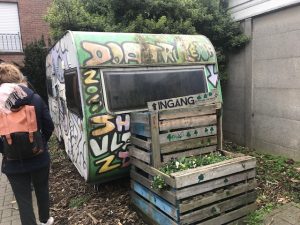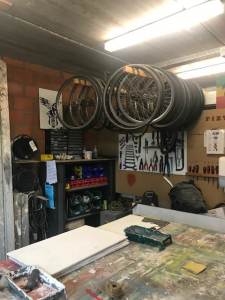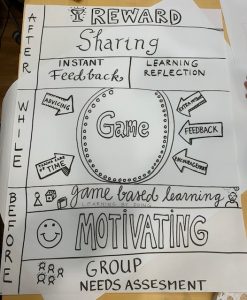 Games are suited to everyone! When adjusting them to migrant groups, language support among other things needs to be highlighted. In CONNEXT we have worked around the topic internationally. This is a compilation of ideas on how to use gamification with migrants collected in a project partner meeting in Karlstad and in the CONNEXT Finland game sessions. Our game missions guide participants around their environment making use of different electronical platforms, but you can do yours in your preferred way!
Games are suited to everyone! When adjusting them to migrant groups, language support among other things needs to be highlighted. In CONNEXT we have worked around the topic internationally. This is a compilation of ideas on how to use gamification with migrants collected in a project partner meeting in Karlstad and in the CONNEXT Finland game sessions. Our game missions guide participants around their environment making use of different electronical platforms, but you can do yours in your preferred way!
It is meaningful to plan games keeping these three stages in mind:
- before playing
- while playing
- after playing
Everything starts from you as an instructor or a teacher. Get to know the gaming platform you are using and learn to use it. The best thing is when you know your group and their actual and special needs. Do the needs assessment for your group and start planning the game!
We suggest the following:
1. Before playing
- Anticipate right day and equipment
It is important that the participants know early enough about the game session particularly if they should be prepared in some way e.g. with a full phone battery or weatherproof clothes. It’s good to keep in mind that people have different perceptions on weather and some may find for example the Nordic snow and cold quite intimidating. Weather conditions can be a big deal when playing outside, so do look at the weather forecast in advance!
- Explain why
Although game-based learning is becoming increasingly more common, it isn’t a familiar approach to everyone. According to our experiences, some may feel it resembles too much children’s play, which may undermine the dignity of a grown-up. This can be the case particularly with some adults from migrant groups. Whatever the group, it’s important that your group knows why you are playing the game, how does it promote the aims of the group and what do the players gain from playing. You can assess the usefulness of the game also together in the end.
- Plan groups carefully
If the group is very heterogeneous in view of language or technical skills, it’s good to plan diverse game groups, where participants can support each other in a meaningful way. However, a special attention should be paid to the division of the labour. In some mixed CONNEXT game groups we noticed that the native speakers easily took the lead, while those from the migrant groups took a more passive role. It’s important to discuss in advance that everyone has a valuable role to play and everyone has to be given an opportunity to participate.
- Keep flexible schedule
Usually everything in a game session lasts longer than you have imagined and planned. Lack of strong common language often means giving instructions takes time. They may need to be repeated a few times. In some cases cultural habits may also affect the starting time: how to make sure that everyone will be there, when the game starts?
Especially if the game session is the first one with the group, give time for people to orientate and ask questions. You also need to give the initial info and instructions for participants and discussions after the game.
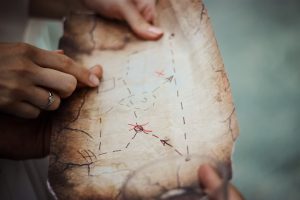
2. While playing
- Use oral and visual instructions
Simple game missions are a good way to start, if you are playing with a heterogeneous group. In order for technical aspects not to discourage the participants nor to hamper the joy of playing, we recommend you to use plain language and to give instructions in stages. For some people listening is easier than reading. In this case recorded instructions probably work the best.
Including pictures with the equivalent word can support the understanding of instructions and simultaneously it promotes language learning. In CONNEXT we have also had good experiences with using instruction videos: if you cannot explain it, show it!
- Choose suitable answering options
Complicated missions including many elements or long written answers may be a challenge for players who don’t have a strong common language. Therefore, you may wish to start with the simple options: take a picture, add a word, choose the right one among multiple choice options, make a film or say a sentence and record it. We have noticed that recording an answer in a game has been a motivating way to support languet learning even for those, who may be shy to speak in the class.
However, it may be easiest, if there is not too much variation in the beginning. Starting with 2-3 answering option types in the beginning gives the participants an opportunity to feel familiar and safe with them, perhaps the rest can be used next time?
- Give support and encouragement
All people need support while playing, but the need increases in a heterogeneous group. Think in advance if your group should have instructors joining the game groups. They can guide players and support their motivation with their own example in a fair and enthusiastic way. CONNEXT has noticed that some adult players have benefited from an instructor in their group in particular, as they were concerned and even a little stressed about their level of technical skills. When the instructor joined the group, everyone could better concentrate in the contents and learning.
You may wish to have an extra hand during the game for giving feedback, guidance and support from a distance, even if instructors wouldn’t join the groups themselves. According to the experiences of CONNEXT giving feedback to the players regularly is very motivating and it gives the participants a feeling that you as an instructor are also part of the game.
- Prepare support material
In order to support your groups, you can prepare a resource pack, which can be carried e.g. in a bag and given to all groups in the beginning of the game. It can consist e.g. of a vocabulary related to the theme of the game. The support bag of Swedish #Work game consisted of a paper with a model discussion. As the participants were expected in the game to approach a stranger on the street and ask them about their career, the participants could rehearse the discussion in advance: how to start the conversation, how to explain what you aim at etc. The paper with a model discussion gave more time for the participants to prepare and increased the likelihood that the encounter is successful.
3. After playing
It’s never just about the game session. Games can be seen as an instrument for example to learn or to become more empowered, inspired, self-aware and determined.
- Collect feedback
It is important that the players can contribute and give feedback on the game. Feedback can be included in the game as one task. You have a choice to make: are you collecting feedback during the game, right after the game or would you like to have another session afterwards. Depending on the language skills of the participants you can choose e.g. feedback in multiple choice, audio, or video formats.
- Share and reward
Discuss with the group about the game and its task. Share and show answers given by the groups. If there was points given in the game make sure you also reward the winners and encourage the others as well.
Gamification is all about keeping your own mind open and positive. That is contagious.
Text: Tiina Lehto-Lundén & Mai Salmenkangas, Metropolia University of Applied Sciences & Alisa Rämö, Omnia Vocational Upper Secondary School
Picture: Pexels/ Pixabay & Johanna Syrén


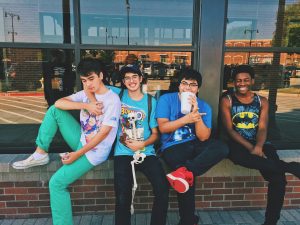 Additionally, I looked into boys’ experiences of communication between family and school, the support they get from teachers and school curators, their own suggestions on how to improve this support as well as their own experience of participation and disadvantage in society. I interviewed boys and young men from 2 different schools and made use of the Capabilities Approach developed by Martha C. Nussbaum in the analyzing process.
Additionally, I looked into boys’ experiences of communication between family and school, the support they get from teachers and school curators, their own suggestions on how to improve this support as well as their own experience of participation and disadvantage in society. I interviewed boys and young men from 2 different schools and made use of the Capabilities Approach developed by Martha C. Nussbaum in the analyzing process.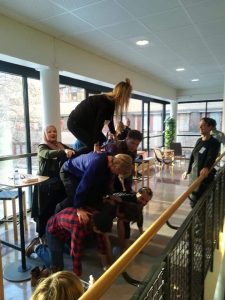
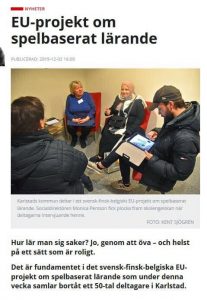 The local radio station accompanied one of the teams and made an
The local radio station accompanied one of the teams and made an 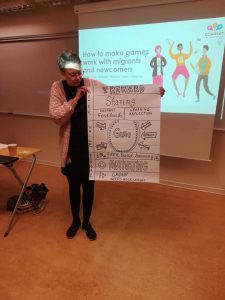
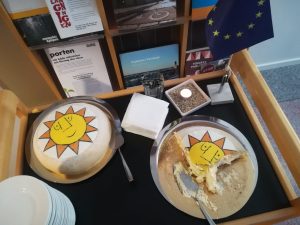 After lunch the participants had a choice to visit ESF-projects and other places working with migrants and youngsters. For example in
After lunch the participants had a choice to visit ESF-projects and other places working with migrants and youngsters. For example in 








